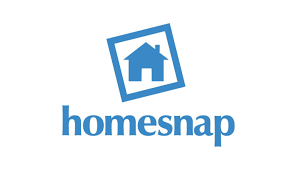What is house rehab:
House rehab, short for house rehabilitation or home renovation, refers to the process of restoring or improving a residential property. It involves making repairs, upgrades, and modifications to enhance the functionality, aesthetics, and value of the house. House rehab can range from minor cosmetic changes to extensive remodeling projects that may involve structural repairs.
The specific scope of a house rehab project depends on various factors, such as the condition of the house, the goals of the homeowner, and the available budget. Common aspects of house rehab may include:
-
Repairs: Fixing any structural issues, plumbing or electrical problems, roof leaks, or other damages in the house.
-
Renovation: Updating the interior or exterior of the house to improve its appearance and functionality. This may include painting, flooring replacement, adding new fixtures, or upgrading appliances.
-
Kitchen and Bathroom Upgrades: These areas are often the focus of rehab projects. Upgrading countertops, cabinets, appliances, and fixtures can significantly enhance the value and appeal of a house.
-
HVAC Systems: Replacing or repairing heating, ventilation, and air conditioning (HVAC) systems to ensure efficient operation and comfort.
-
Energy Efficiency Improvements: Adding insulation, installing energy-efficient windows, or upgrading appliances to reduce energy consumption and lower utility bills.
-
Structural Modifications: Sometimes, rehab projects involve altering the house’s layout, adding or removing walls, or expanding rooms to meet the homeowner’s specific needs.
-
Exterior Enhancements: Improving the curb appeal of the house by landscaping, repainting the exterior, repairing the roof, or adding a porch or deck.
House rehab projects can be undertaken by homeowners themselves if they have the necessary skills and knowledge, or they can hire professional contractors, architects, or interior designers to assist them. The extent and complexity of the rehab will determine the time and cost involved.
How to rehab a house on a budget?
Rehabbing a house on a budget requires careful planning, prioritization, and resourcefulness. Here are some tips to help you rehab a house while keeping costs under control:
-
Set a Realistic Budget: Determine how much you can afford to spend on the rehab project. Create a detailed budget that includes all anticipated expenses, such as materials, labor, permits, and contingencies. It’s crucial to have a clear understanding of your financial limitations from the outset.
-
Identify Priority Areas: Assess the condition of the house and identify the areas that require the most attention. Focus on essential repairs and improvements that will have the greatest impact on the functionality and value of the property. Addressing structural issues, plumbing or electrical problems, and safety concerns should take precedence over cosmetic enhancements.
-
DIY vs. Hiring Professionals: Determine which tasks you can handle yourself and which ones require professional assistance. Doing some of the work yourself can save money, but it’s important to be realistic about your skills and the time you can dedicate to the project. Hiring professionals for complex or specialized tasks may be more cost-effective in the long run, as they can complete the work efficiently and to a higher standard.
-
Comparison Shop for Materials: Research and compare prices for building materials, fixtures, and appliances. Look for sales, discounts, or wholesale options. Consider buying gently used or reclaimed materials, such as doors, cabinets, or flooring, which can often be found at a lower cost. Just ensure they are in good condition and fit your design aesthetic.
-
Prioritize Cosmetic Improvements: If your budget is limited, focus on affordable cosmetic upgrades that can have a significant visual impact. Repainting the walls, refinishing cabinets or furniture, replacing light fixtures, or updating hardware can give the house a fresh look without breaking the bank.
-
Optimize Energy Efficiency: Invest in energy-efficient upgrades that can save you money in the long run. Adding insulation, installing LED lighting, and upgrading windows can improve energy efficiency and reduce utility costs. Look for local or government incentive programs that provide financial assistance or tax credits for energy-efficient renovations.
-
Consider Sweat Equity: Take on tasks that you feel comfortable doing yourself. From painting and landscaping to minor repairs and cleaning, putting in your own time and effort can save labor costs.
-
Plan for Contingencies: It’s essential to include a contingency fund in your budget to account for unexpected expenses that may arise during the rehab process. Aim to set aside around 10-20% of your total budget for unforeseen costs.
Remember, rehabbing on a budget often requires compromise and prioritization. Focus on essential repairs and improvements first, and as your finances allow, gradually tackle cosmetic enhancements and additional upgrades.
What is the difference between rehab and flipping?
Rehabbing and flipping are two distinct terms used in the real estate industry, although they are often related and can sometimes overlap. Here’s the difference between the two:
-
House Rehab/Rehabilitation: House rehab, as mentioned in the previous response, refers to the process of renovating or restoring a residential property. The main objective of a rehab project is to improve the condition, functionality, and aesthetics of the house. It typically involves making repairs, upgrades, and modifications to enhance the property’s value and appeal. The intention behind a rehab is usually to create a long-term investment or to improve a property for personal use.
-
House Flipping: House flipping, on the other hand, involves buying a property, typically in distressed or undervalued condition, with the intention of selling it quickly for a profit. Flipping is a short-term investment strategy where the focus is on buying low, making minimal repairs or cosmetic improvements, and selling high. Flippers often aim to complete the project as quickly as possible to maximize their return on investment.
In summary, the key difference lies in the intention and timeframe:
- Rehabbing focuses on the renovation and improvement of a property to enhance its long-term value and functionality.
- Flipping is a short-term investment strategy where properties are bought low, quickly improved, and then sold for a profit.
While some rehab projects may involve flipping, not all rehab projects are necessarily flipping endeavors. Flipping typically involves a faster turnaround and a higher level of risk, as the success of the investment depends on accurately assessing the market, making timely improvements, and finding a buyer willing to pay a higher price.

Are you ready to take the next step to buy(or sale) your home and start building a legacy for your family?…Let me help you!
“Your Dream Home is my Mission”. I am a Brazilian Licensed Realtor at Re-Connect, LLC with 18+ years of experience in the Real Estate industry. I speaks 3 languages (Portuguese, English, Spanish). Let me join your journey in the Real Estate Industry, and receive my assistance above and beyond to accomplish your DREAM!
CALL NOW: (617) 201-9188 Ana Roque | 209 West Central Street, Natick, MA











